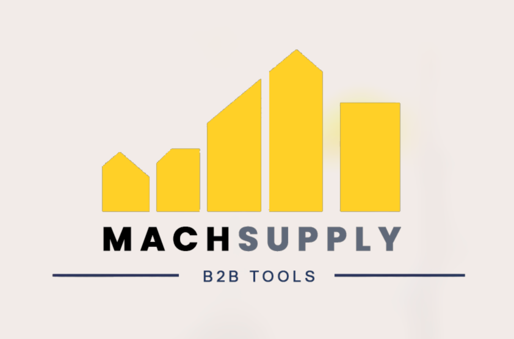How generative AI helped us create an e-commerce app – with personalised content – in just 2 weeks
Imagine creating a fully functioning e-commerce app… without any data, products or content to work with? That’s exactly what our colleagues at The Reference did, and with a seemingly impossible time frame of just two weeks. Their mission was very specific – to see if they could develop a “B2B e-commerce proof of value that harnesses the unique strengths of different MACH components and merges them into one cohesive unit to create a fully orchestrated unity”.
We’ll take you through each task they followed, step by step, and show you just how generative AI shines as a collaborative partner. The team used a variety of AI tools such as ChatGPT, Dall-E, Midjourney, LangChain and FlowiseAI.
Defining the concept and theme
But it all started with the human touch: a brainstorm. After a lively session, the team invented a fictional company called MACHsupply, and defined a concept:
“A B2B company selling construction and building tools for different professional target groups.”
And that was it. This concept could now be used as a prompt to ask ChatGPT to work its magic, giving the company a background, and coming up with the scope of the demo.

What to sell, and to whom?
The team asked ChatGPT Browse with Bing to look at the websites of Home Depot Pro and Lowe’s for Pros to create common product segments in construction retail. They also tasked ChatGPT with customer personas, outlining the needs, behaviours and communication channels of each target audience. To bring that all-important personalisation to the buying experience, ChatGPT was asked to map each persona to a product category.
Drilling down into products and descriptions
Before you can load any actual products into the headless commerce platform, in this case commercetools, you need to set up a Product Information Management system. Again, ChatGPT delivered the goods, from general information (product ID, brand, SKU) and physical attributes (weight, dimensions, colour) to technical specifications (voltage, load capacity, etc).
Using a PHP script and binary files, ChatGPT Advanced Data Analytics created a complete CSV file, with 100 fictional products. Every possible detail was covered: fictional product names, the relationships between the products and categories, brand descriptions and all metadata, like sizes.
All these wonderful products… but what do they look like?
No product catalogue is complete without some eye-catching imagery – enter DALL·E. But for this generative AI to create images, it needs the right prompts. The team gave ChatGPT advanced data analytics to generate the best DALL·E prompts as well as the product data. They then asked it to create product shot prompts for each of the 100 products.

The team turned once again to the Advanced Data Analytics part of ChatGPT to create a PHP script, so they can feed it with a JSON file and export 100 separate image files – each with a file name and product ID. Within two minutes, the team had a bulk export of 100 images.
Creating inspirational visuals and content
To make the app perfect, the team used MidJourney to create a logo and imagery for the home and category pages. MidJourney also created images for the main personas – to give faces to key target audiences – and for blog articles.

In terms of content, everything on the app is personalised and segmented for different target audiences. The team started with just a piece of generic text for articles in the fully headless CMS. The generative AI in the CMS is then prompted to rewrite it for a specific audience, eg, for a renovation specialist. The result? Inspirational, targeted content, just like that!
The missing piece: a more connected, intelligent chat function
The only thing missing now was chat. Link chain technology (LangChain) and ChatGPT joined up the commerce engine commercetools, the inspirational content in the CMS system, Contentful, and all the relevant files into a fully functional chatbot.
So now customers can ask, for example, ‘What drills do you sell?’. Then ask it to compare drills –eg, the cheapest, the best for concrete – and add their chosen drill to their cart. All from the chat. Thanks to all those connections, they can chat with the cart, ask what’s in there, if everything is in stock, etc. The chat can pull in personalised content, based on the customer profile and the product segment, to offer promotions, inspirational content. It can link up with product manuals too, for the products already bought by the customer.

The result – a fully working e-commerce app with personalisation
They did it. A new Flutter app was born, for an audience that has to get the job done quickly and to get it right first time. Targeted at the construction industry, it needed a huge range of products and content, and had to be super easy and efficient to use on a mobile. It needed to be able to drill down (pardon the pun) into the nitty gritty of very specific tools and materials, to compare them and check for stock. In the building trade you can’t afford to mess about.
But personalisation was central here. The specific needs of each target segment, from large construction managers and renovation specialists to speciality tradespeople, were paramount. For example, a construction manager would be interested in bulk orders, while a renovator would shop for very specific products like tiles and fixtures. They all have very particular needs, behaviours and communication preferences.
Thoughts and takeaways
Data is the key to unlocking incredible, tailormade customer experiences. And, of course, the better the experience, the more customers will buy. But hyper-personalisation also means businesses can fine-tune their marketing spend.
As the team discovered, with that all important human creative nudge, when you put Generative AI and MACH architecture together, something amazing happens.
In this case, the team combined these 4 elements within a MACH solution:
- Segment: a customer data platform where all customer data is collected and segmented.
- Commercetools: used as an e-commerce platform.
- Contentful: a headless CMS system.
- Conscia.ai: an orchestration personalisation engine – also known as the ‘brain’ of your composable stack.
Add a sprinkle of AI dust on top, in the form of Chat GPT, DALL·E, Midjourney, LangChain and FlowiseAI, and you have the power to reach whole new levels of personalisation, as well as flexibility, efficiency and innovation, in record time. A huge advantage in today’s rapidly changing world, where staying ahead of the curve is everything.



